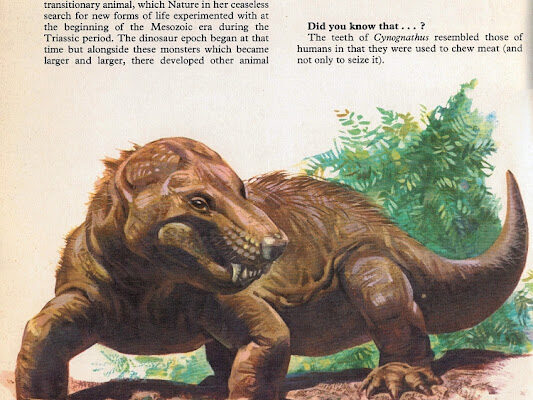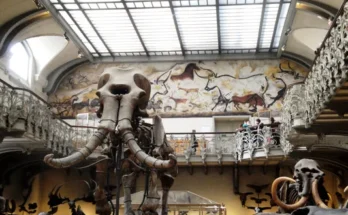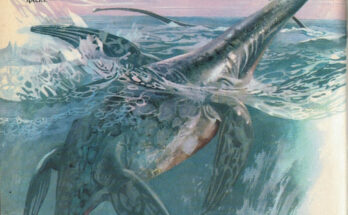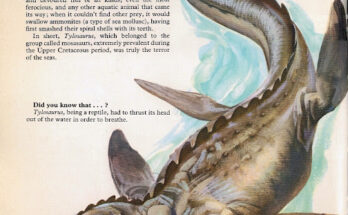Cynognathus: A Comprehensive Tutorial on an Early Mammal-Like Reptile

Introduction
Cynognathus, a remarkable mammal-like reptile from the Mesozoic era, offers a window into the evolutionary transition from reptiles to mammals. This tutorial provides an in-depth exploration of Cynognathus, focusing on its anatomy, lifestyle, and evolutionary significance. Supported by detailed illustrations and scientific context, this guide is tailored for students, educators, and paleontology enthusiasts seeking to understand the precursors to modern mammals.
Overview of Cynognathus
Cynognathus lived approximately 230-245 million years ago during the Triassic period, a time when dinosaurs began to emerge. The image depicts this creature, often described as a “dog-faced” reptile due to its distinctive skull and jaw structure. About the size of a large dog, Cynognathus measured up to 1.2 meters (4 feet) in length and weighed around 50-100 kilograms (110-220 pounds). Its robust build and carnivorous diet made it a dominant predator in its ecosystem.
Anatomical Features
- Skull and Teeth: The image highlights Cynognathus’s strong jaw, equipped with sharp teeth suited for a carnivorous diet. Its teeth included differentiated incisors, canines, and molars, a trait more advanced than typical reptiles and a precursor to mammalian dentition.
- Body Structure: Covered in hair-like structures, as suggested by fossil evidence, Cynognathus had a more mammal-like appearance than its reptilian contemporaries. The image shows a sturdy body supported by four limbs, indicating a semi-upright posture.
- Sensory Adaptations: Evidence suggests Cynognathus had a keen sense of smell and possibly whiskers, adaptations that align with its mammal-like characteristics.
Lifestyle and Behavior
As a carnivore, Cynognathus likely preyed on smaller reptiles, amphibians, and early mammals. The “Did You Know?” section in the image notes an intriguing fact: the teeth of Cynognathus were replaced throughout its life, similar to modern mammals, ensuring it could continue hunting effectively. This regenerative ability, unlike the single tooth replacement in many reptiles, underscores its advanced evolutionary status. The image’s depiction of its alert posture suggests an active predator capable of pursuing prey across its habitat.
Evolutionary Significance
Cynognathus belongs to the therapsid group, a lineage of synapsids that bridged the gap between reptiles and mammals. Its mammal-like features, such as differentiated teeth and possible hair, indicate it was a key evolutionary step toward the development of true mammals. Fossils found in South Africa, Antarctica, and South America provide evidence of its widespread presence during the Triassic, offering insights into the continental configurations of the time.
Educational Applications
This tutorial is an excellent resource for teaching evolutionary biology and paleontology. Educators can use the image to illustrate the transition from reptilian to mammalian traits, such as dentition and posture. Students can analyze Cynognathus’s anatomy to explore the concept of convergent evolution and the gradual development of mammalian characteristics. The visual aid enhances interactive learning and encourages further study of Triassic ecosystems.

Scientific Context
Fossil discoveries of Cynognathus, particularly in the Karoo Basin of South Africa, have provided extensive data on its morphology and ecology. Paleontologists use these fossils to reconstruct the environmental conditions of the Triassic period and to trace the evolutionary lineage leading to mammals. The creature’s distribution across ancient supercontinents like Gondwana highlights its role in understanding prehistoric biogeography.
Conclusion
Cynognathus stands as a pivotal species in the evolutionary history of mammals, blending reptilian and mammalian traits in a unique prehistoric predator. This tutorial offers a detailed examination of its anatomy, behavior, and evolutionary role, supported by the vivid illustration provided. We encourage readers to explore additional resources on therapsid evolution and the rich biodiversity of the Triassic period to deepen their understanding of Earth’s ancient past.



